#Dendera
Explore tagged Tumblr posts
Text

Hypostyle hall of the Temple of Hathor at Dendera
2K notes
·
View notes
Text
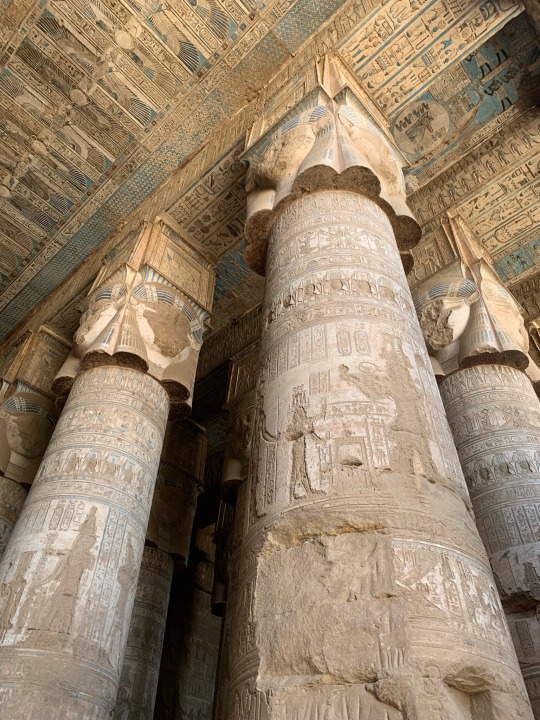
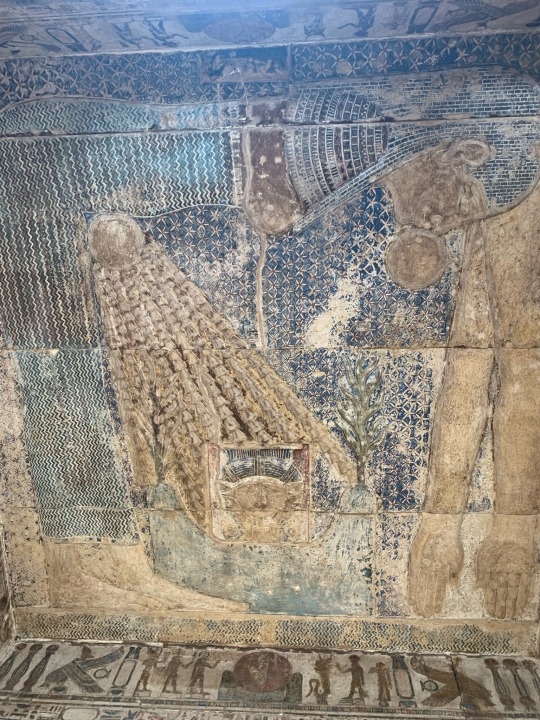
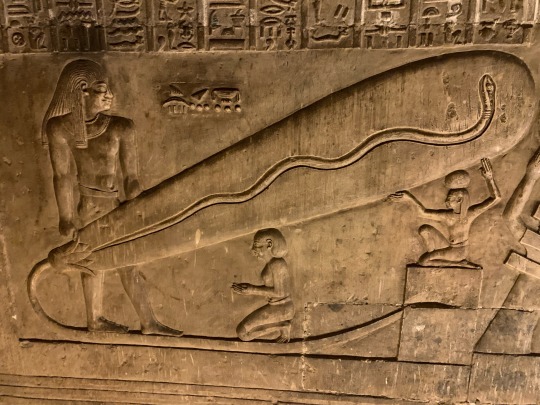

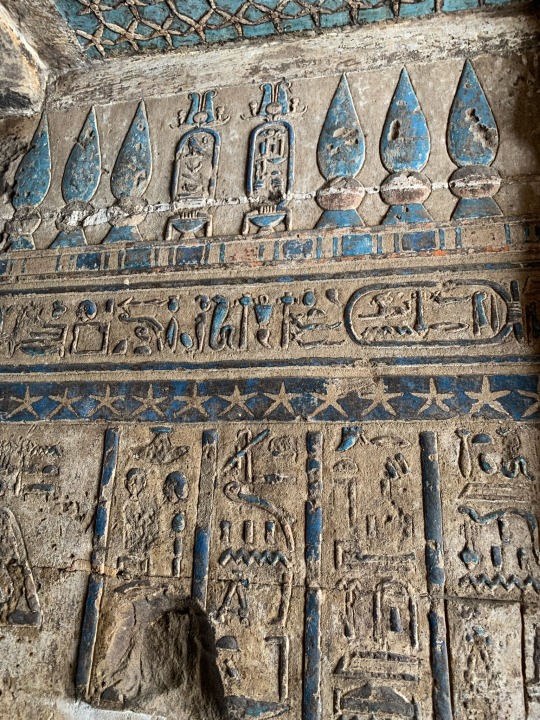



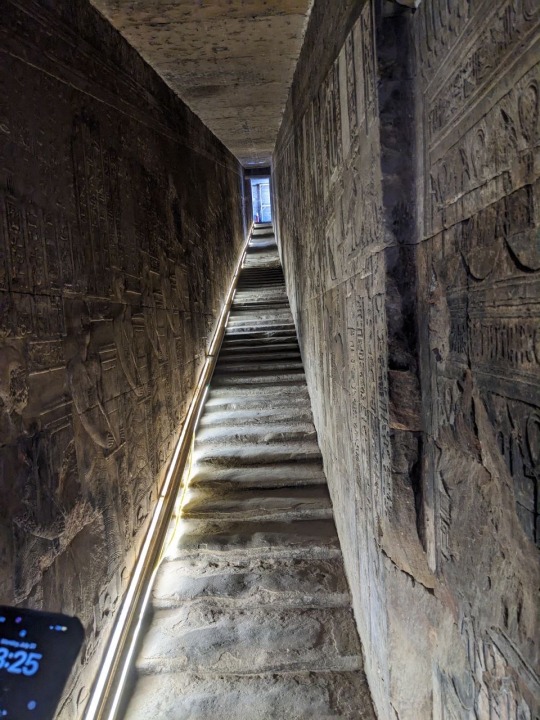

Scenery and imagery from the Hathor temple at Dendera, built in the Greco-Roman period
photos taken by me in August, 2023
Some parts of this temple, when I visited, were off limits. However it was very hard to distinguish what was and wasn’t off limits, so my companion and I wandered everywhere. We also bought passes to the different hidden chambers of the temple; well worth the price in my opinion. You descend or ascend cramped, steep stairs to get to seemingly secret and certainly hidden tunnels filled with vivid imagery of the Gods and worship. Unfortunately, the Dendera calendar filled with zodiacs, has been stolen and replaced with a black cast of what it once was. The original now rests in a museum in Europe.
#ancient egypt#dendera#Hathor#egyptian mythology#egyptian hieroglyphs#ancient history#egyptian gods#egyptian art#egyptology#ancient art#hieroglyphs#egypt
1K notes
·
View notes
Text

The Dendera zodiac - Egypt
#alchemy#magic#ancient#archaeology#energy#ascension#astrology#astronomy#light#consciousness#ancient egypt#science#pyramids#dendera#kemet#ancient kemet#godhood#technology
156 notes
·
View notes
Text
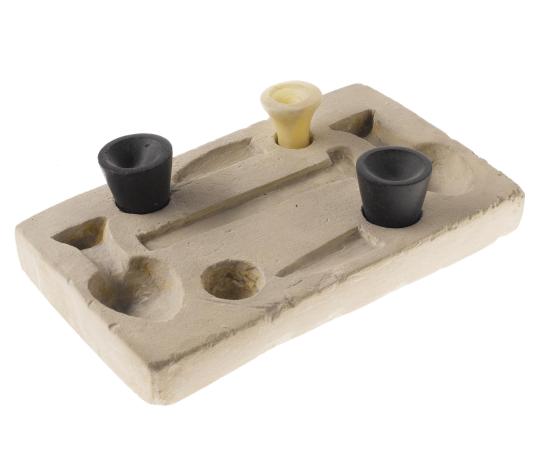
~ Basalt cups from a set of implements for the Ceremony of Opening the Mouth.
Period: 6th Dynasty
Place of origin: Tomb of Adu I, Dendera, Upper Egypt
Medium: Basalt
#ancient#ancient egypt#Egypt#Egyptian#basalt cups#ceremony of opening the mouth#tomb of adi i#dendera#6th Dynasty#history#archeology#museum
526 notes
·
View notes
Text

| Lunar barque characterized by the left eye of Horus, protected by Thoth and followed by Osiris | { Ceiling of Dendera temple, Ptolemaic period }
#ancient egypt#history#netjeru#kemetic#ancient art#ancient kemet#osiris#wesir#thoth#djehuty#moon#dendera#ptolemaic
44 notes
·
View notes
Text

📸 Ahmed Sameh
Temple of Hathor.
📍 Dandarah (Dendera), Egypt
26 notes
·
View notes
Text

The Temple of Dendera - EGYPT
98 notes
·
View notes
Text

hathor temple, dendera, egypt
x
31 notes
·
View notes
Text

Temple of Hathor in the Dendera Temple complex, Egypt
British vintage postcard
#hathor#photography#vintage#ephemera#sepia#british#egypt#carte postale#postkarte#temple of hathor#the dendera temple#briefkaart#dendera#tarjeta#temple#postal#historic#postkaart#photo#ansichtskarte#complex#postcard
16 notes
·
View notes
Text
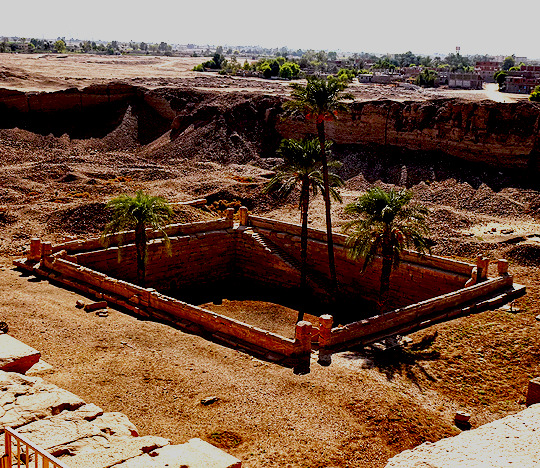
Sacred Lake Hathor Temple Dendera The sacred lake was a pool of water next to the temple. It was where priests purified themselves before performing rituals in the temple. [source]
#egypt#ancient egypt#egyptology#archaeology#historyedit#mine#my edit#documentary#dendera#sacred lake#hathor#temple
269 notes
·
View notes
Text




Temple Cat, Dendera
19 notes
·
View notes
Text

Bat became the emblem on a sistrum, related to Hathor, which appears on the top of her columns of her main temple of Dendera.
308 notes
·
View notes
Text
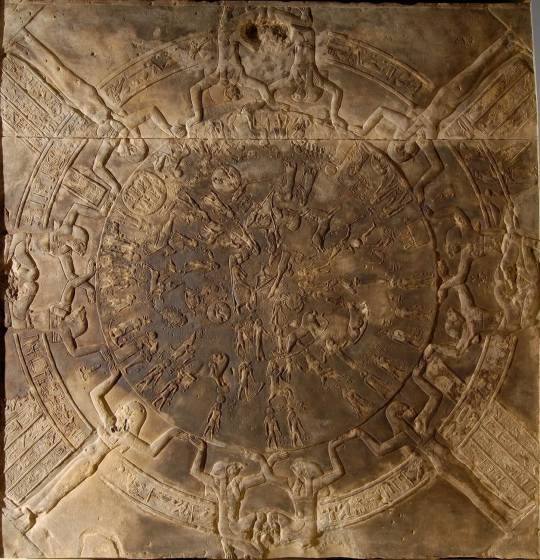
The Dendera Zodiac
The zodiac is a widely known Egyptian bas-relief from the ceiling of the pronaos of a chapel dedicated to Osiris in the Hathor temple at Dendera. It contains images of Taurus and the Libra.
The chapel was begun in the late Ptolemaic period; its pronaos was added by the emperor Tiberius. This led Jean-François Champollion to date the relief correctly to the Graeco-Roman Period. However, most of his contemporaries believed it to be of the New Kingdom.
The relief, which John H. Rogers characterized as “the only complete map that we have of an ancient sky”, has been conjectured to represent the basis on which later astronomy systems were based. It is now on display at the Louvre, Paris. D 38 ; E 13482 ; CM 464 Read more
124 notes
·
View notes
Text

#dendera#chibihaifish#vtuber#modern clothing on my queen#digital art#digital aritst#no ai used here#my hyperfixation took over again#art from autism
5 notes
·
View notes
Text
Denderah - Carvings with Cleopatra VII and her son Ptolemy XV Caesar

The colossal carving of Cleopatra VII Philopator (51-30 BC) and her son Ptolemy XV Caesarion (44-30 BC) before the gods, on the south exterior wall of Temple of Dendera. The large goddess on the right, the first of a procession of deities not included in the photograph, is Hathor. The present temple at Dendera is essentially a Ptolemaic structure, with the exception of the mammisi (or 'birth house') erected by Nectanebo I (380-362 BC), which represents the earliest surviving structure of the complex, and later Roman additions, such as the first hypostyle hall, built by the Emperor Tiberius (42 BC-AD 37). There is evidence, though, that the temple was built on the site of a previous one, dating at least from the early New Kingdom (around 1500 BC) with suggestions of structures being present in the area at the time of Pepy I (2321-2287 BC). The temple, one of the best preserved in Egypt, is dedicated to Hathor. The goddess is usually represented as a cow, often with the solar disc between the horns, in human form with, similarly, the solar disc between cow horns, such as in this case, or as a woman with cow’s ears. Her name means ‘house of Horus’ and, as the living king was identified with Horus, Hathor was considered the divine mother of the pharaoh, who had ‘son of Hathor’ as one of his royal titles. It is then certainly not a coincidence that Cleopatra decided to have this colossal scene carved onto a wall of the temple of Hathor.
#cleopatra#caesarion#cleopatra vii#ptolemy xv caesar#dendera#dendera temple#ancient history#history#archeology#ancient art#art#ptolemaic dynasty#ptolemaic egypt#ptolemies#ancient egypt#egypt#carvings#hathor#horus#gods#egyptian gods
19 notes
·
View notes

